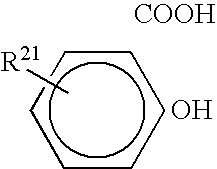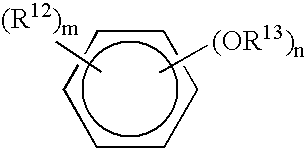Antimicrobial film-forming dental compositions and methods
a technology of dental compositions and antimicrobial materials, applied in the field of antimicrobial film-forming dental compositions and methods, can solve the problems of reducing the effectiveness of antimicrobial materials
- Summary
- Abstract
- Description
- Claims
- Application Information
AI Technical Summary
Benefits of technology
Problems solved by technology
Method used
Image
Examples
examples
Test Methods
Turbidity Test Method
[0218] A test sample solution (e.g., an isopropanol solution of polymeric film former and antimicrobial component) was uniformly coated to 25-micrometer wet thickness on both sides of 50-micrometer thick corona-treated (under nitrogen) polypropylene. The coatings were allowed to dry in air for 12 hours. Coated sheets were punched to provide 1.5-cm diameter coated discs for antimicrobial testing.
[0219] The polymer-coated discs were tested for bacteria attachment and effectiveness according to the following procedure. Overnight culture of Streptococcus mutans (S. mutans) (ATCC#25175) in sterile BHI broth (106 CFU / ml) was prepared. A coated disc was submerged in 9 ml of the bacteria culture for 45 minutes at 25° C. After removing the disc from the culture, the excess culture on the disc was gently rinsed off with de-ionized water and the rinsed disc was placed in a test tube containing 9 ml sterile BHI broth. The turbidity of the culture (with the c...
PUM
| Property | Measurement | Unit |
|---|---|---|
| mole ratio | aaaaa | aaaaa |
| temperatures | aaaaa | aaaaa |
| functional wavelength range | aaaaa | aaaaa |
Abstract
Description
Claims
Application Information
 Login to View More
Login to View More - R&D
- Intellectual Property
- Life Sciences
- Materials
- Tech Scout
- Unparalleled Data Quality
- Higher Quality Content
- 60% Fewer Hallucinations
Browse by: Latest US Patents, China's latest patents, Technical Efficacy Thesaurus, Application Domain, Technology Topic, Popular Technical Reports.
© 2025 PatSnap. All rights reserved.Legal|Privacy policy|Modern Slavery Act Transparency Statement|Sitemap|About US| Contact US: help@patsnap.com


